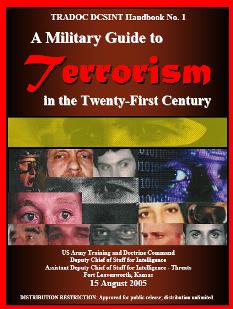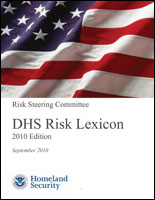
Ride the
Thunder: A Vietnam War Story of Honor and Triumph
|
|
Greetings!
The recent failed terrorist attack in Times
Square, as well as the thwarted Christmas Day
bombing of the commercial airliner, has reminded
us of the serious threat to our Country. We
have revisited some of our early newsletters as
well as searched through more recent information
and developed ten critical pieces of information
for you, your families and your colleagues.
Thus, the May 2010 issue of the American Heroes
Newsletter focuses on Homeland Security. Thank
you for subscribing and contributing to the
newsletter.
|
|
Active Shooter: Tri-fold Brochure for Response
In aftermath of the Fort Hood shootings, Air Force
Education and Training command officials emphasize
vigilance and readiness to respond to unexpected
life-threatening events.
They issued tri-fold brochure for training, education
and response.
Download the Brochure
|
|
What Every Business Owner Should Know about
Homeland Security
The top ten issues business owners and other community
leaders with multiple resources for each issue.
Read On
|
Needs Assessment
The International Association of Chiefs of Police
conducted a Homeland Security Preparedness Survey. The
survey, sponsored by ITT Industries, was sent to more
than 17,000 state and local law enforcement
agencies. The results of the survey were not
surprising; nine out of ten law enforcement agencies did
not feel they were adequately prepared to prevent or
respond to a terrorist event. Moreover, police officers
across the nation identified among the keys issues were
interagency communication, specialized equipment and the
lack of sufficient training.
|
 Military
Guide to Terrorism in the 21st Century Military
Guide to Terrorism in the 21st Century
In August 2005, the United States (US) Army Training and
Doctrine Command, Assistant Deputy Chief of Staff for
Intelligence-Threats released the Military Guide to
Terrorism in the Twenty-First Century. The Guide was
designed primarily for US military forces, however,
other applicable groups such as state and local first
responders can benefit from the information contained in
the Guide. While primarily written to support
operational missions, institutional training, and
professional military education for US military forces
in the Global War on Terrorism (GWOT), US domestic first
responders will also find the Guide beneficial.
Download the Guide
|
The Individual's Guide for Understanding and
Surviving Terrorism
On September 18, 2001, shortly after the terrorist
attacks of 9-11, the United States Marine Corps
published "The Individual's Guide for Understanding and
Surviving Terrorism." This
138 page document outlines terrorism and terrorist
incidents. It provides the reader with information on
detecting terrorists, including practical tactics for
detecting surveillance and general information on
protection through awareness. The guide also provides
information on what to expect if taken hostage and
offers advice on how a hostage should conduct themselves
during hostage taking, imprisonment and rescue.
|
Highlighting the theme, "When Seconds Count...," this
event will provide real-time, threat-based training for
law enforcement, fire service, EMS/Medical, Emergency
Nursing, Homeland Security and other disaster
communities. Responders attending TAK-Response can
expect the training and information exchange necessary
to perform their jobs in the most critical situations.
More Information
|
Pre-Incident Indicators of Terrorist Incidents
The Identification of
Behavioral, Geographic, and Temporal Patterns of
Findings from the American Terrorism Study reveal that
unlike traditional criminality, terrorists are much less
spontaneous, engage in substantial planning activities,
and commit ancillary and preparatory crimes in advance
of a terrorist incident. Building on these findings, the
goals of the current project were to determine whether
(1) sufficient open source data exists to examine the
temporal and spatial relationships that exist in
terrorist group planning, and (2) if such data do exist,
can patterns of routinized preparatory conduct be
identified.
|
Impact of terrorism on state law enforcement
State law enforcement represents about 10 percent of
total police employment in the United States.1 In
keeping with this employment level, state law
enforcement has traditionally played an important, but
relatively small role in the overall picture of
policing in America. The catastrophic events on Sept.
11 served as a wake-up call to the nation regarding
the threat of terrorism. More specifically, it
appeared to create and shift responsibilities and
paradigms among all layers of law enforcement. Soon
after Sept. 11, anecdotal evidence indicated many new
homeland security roles for state police
organizations, such as: coordinating homeland security
at the state level; collecting, analyzing and sharing
critical information and intelligence; protecting
critical infrastructure and key assets; securing the
nation's borders, air and sea ports; collaborating
with federal and local law enforcement on task forces;
and, preparing for new response equipment, tactics,
systems and training.
Read On
|
|
Bomb Threat Stand Off Distances Chart
The Bomb Threat Stand Off Distances Chart was developed
by the National Counterterrorism Center and provides
evacuation distances for various types of bomb threats.
|
|
 Department
of Homeland Security Risk Lexicon Department
of Homeland Security Risk Lexicon
Developed by the Intra-Departmental DHS Risk Steering
Committee (RSC), the purpose of the DHS Risk Lexicon
Project is to establish and make available a
comprehensive list of terms and meanings relevant to the
practice of homeland security risk management and
analysis. Accomplishing this goal improves the
capability of the Department and its components to
assess and manage homeland security risk. To support
integrated risk management for the Department, the DHS
Risk Lexicon:
·Promulgates a common language to ease and improve
communications for the Department and its partners;
·Facilitates the clear exchange of structured and
unstructured data, essential to interoperability amongst
risk practitioners; and
·Garners credibility and grows relationships by
providing consistency and clear understanding with
regard to the usage of terms by the risk community
across the Department and its components.
Read On
|
 Amazon
Top 50 Reviewer Praises Leadership: Texas Hold
'em Style Amazon
Top 50 Reviewer Praises Leadership: Texas Hold
'em Style
Charles Ashbacher, a Top 50 Reviewer on
Amazon.com posted a review of Leadership Texas
Hold 'em Style. According to Amazon.com, a
"Top 50 Reviewer" identifies Ashbacher as
having "helped their fellow customers make
informed purchase decisions on Amazon.com with
their consistently helpful, high-quality
reviews." Charles Ashbacher has reviewed over
4,800 books and received nearly 14,000 votes
from readers with an 88% ranking as finding
his reviews helpful.
Read On
|
|
| |
|
Support the newsletter by forwarding and contributing!
Sincerely,
|
|
Lieutenant Raymond E. Foster, LAPD (ret.)
|
|
|
